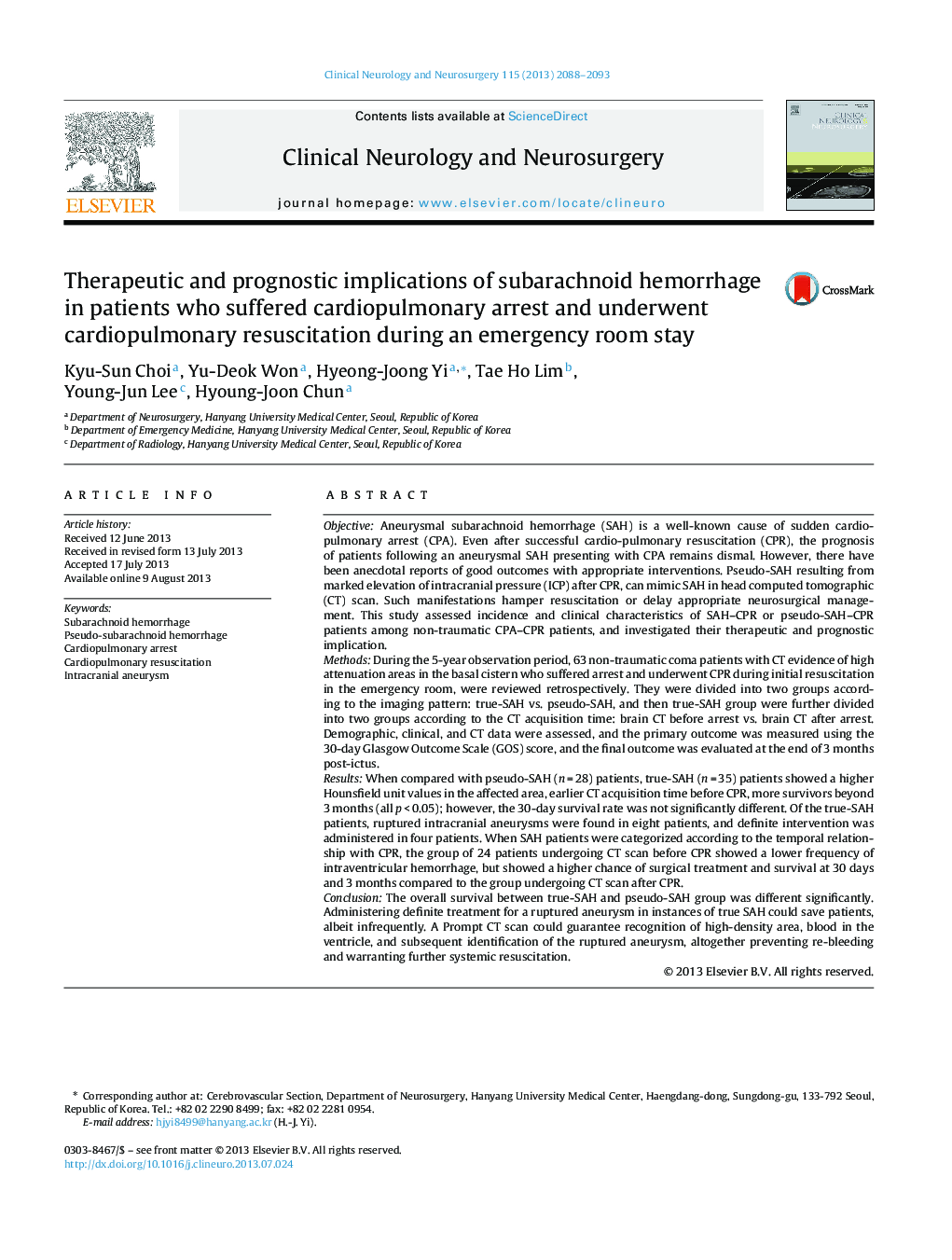| کد مقاله | کد نشریه | سال انتشار | مقاله انگلیسی | نسخه تمام متن |
|---|---|---|---|---|
| 6006572 | 1184737 | 2013 | 6 صفحه PDF | دانلود رایگان |
ObjectiveAneurysmal subarachnoid hemorrhage (SAH) is a well-known cause of sudden cardio-pulmonary arrest (CPA). Even after successful cardio-pulmonary resuscitation (CPR), the prognosis of patients following an aneurysmal SAH presenting with CPA remains dismal. However, there have been anecdotal reports of good outcomes with appropriate interventions. Pseudo-SAH resulting from marked elevation of intracranial pressure (ICP) after CPR, can mimic SAH in head computed tomographic (CT) scan. Such manifestations hamper resuscitation or delay appropriate neurosurgical management. This study assessed incidence and clinical characteristics of SAH-CPR or pseudo-SAH-CPR patients among non-traumatic CPA-CPR patients, and investigated their therapeutic and prognostic implication.MethodsDuring the 5-year observation period, 63 non-traumatic coma patients with CT evidence of high attenuation areas in the basal cistern who suffered arrest and underwent CPR during initial resuscitation in the emergency room, were reviewed retrospectively. They were divided into two groups according to the imaging pattern: true-SAH vs. pseudo-SAH, and then true-SAH group were further divided into two groups according to the CT acquisition time: brain CT before arrest vs. brain CT after arrest. Demographic, clinical, and CT data were assessed, and the primary outcome was measured using the 30-day Glasgow Outcome Scale (GOS) score, and the final outcome was evaluated at the end of 3 months post-ictus.ResultsWhen compared with pseudo-SAH (n = 28) patients, true-SAH (n = 35) patients showed a higher Hounsfield unit values in the affected area, earlier CT acquisition time before CPR, more survivors beyond 3 months (all p < 0.05); however, the 30-day survival rate was not significantly different. Of the true-SAH patients, ruptured intracranial aneurysms were found in eight patients, and definite intervention was administered in four patients. When SAH patients were categorized according to the temporal relationship with CPR, the group of 24 patients undergoing CT scan before CPR showed a lower frequency of intraventricular hemorrhage, but showed a higher chance of surgical treatment and survival at 30 days and 3 months compared to the group undergoing CT scan after CPR.ConclusionThe overall survival between true-SAH and pseudo-SAH group was different significantly. Administering definite treatment for a ruptured aneurysm in instances of true SAH could save patients, albeit infrequently. A Prompt CT scan could guarantee recognition of high-density area, blood in the ventricle, and subsequent identification of the ruptured aneurysm, altogether preventing re-bleeding and warranting further systemic resuscitation.
Journal: Clinical Neurology and Neurosurgery - Volume 115, Issue 10, October 2013, Pages 2088-2093
